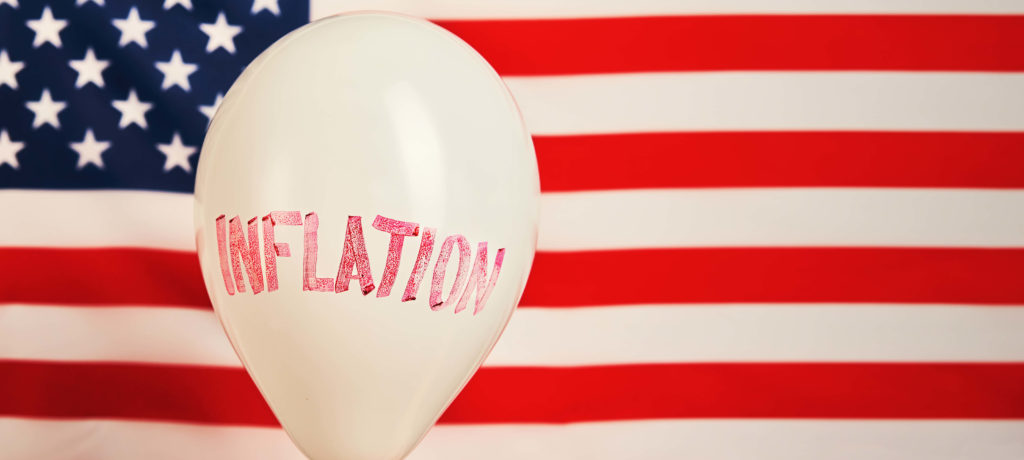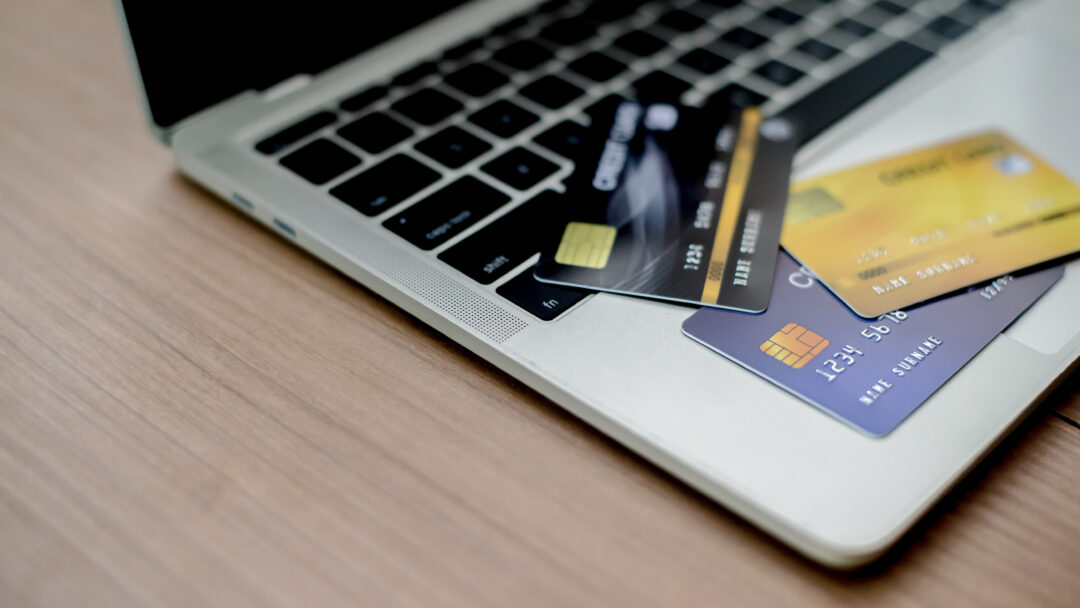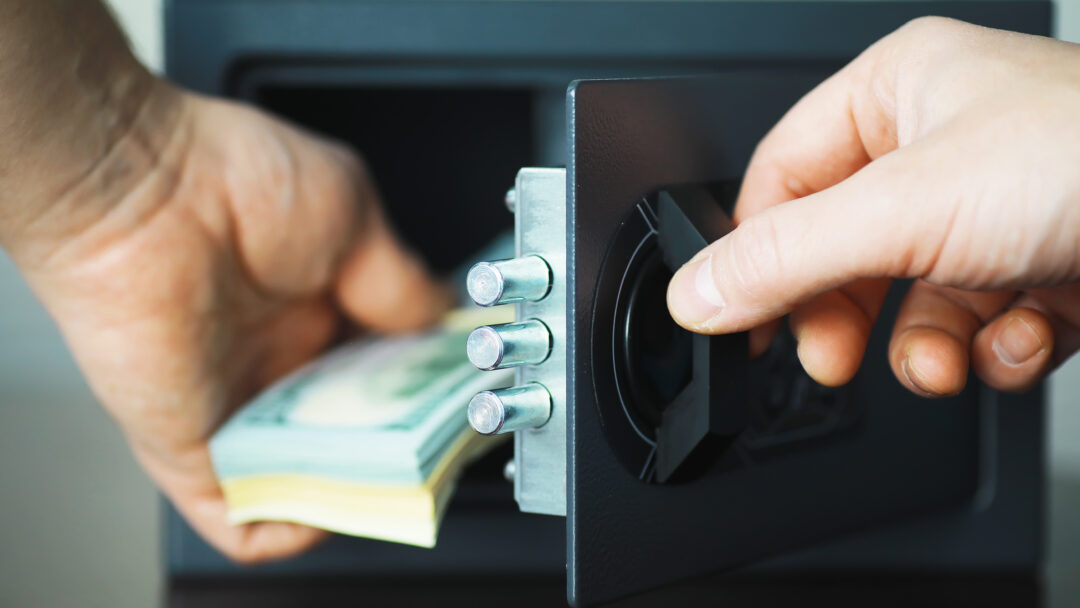Inflation and APR
- APR Basics: Annual interest on credit card balances, affected by credit score and financial history.
- APR Increases: Triggered by missed payments, high balances, and federal rate hikes.
- Lowering APR: Use balance transfers, improve credit, or negotiate with issuers.
- Debt Relief Options: Programs like debt consolidation and settlement can ease high-interest debt.
If you have visited the grocery store or filled up your gas tank recently, you saw the effect that inflation has on prices. But did you know that the APR you pay on your credit cards has also skyrocketed and there is no end in sight?
If you have visited the grocery store or filled up your gas tank recently, you saw the effect that inflation has on prices. But did you know that the APR you pay on your credit cards has also skyrocketed and there is no end in sight?
The average credit card interest rate in the country is up from 17.25% in July to 22.21% today. In laymen’s terms, this means that you are paying more interest on carried balances. Since inflation isn’t going away anytime soon, the best solution is to pay off your debt immediately. But that is easier said than done. So, let’s explore your options.
Free Consultation with a Certified Debt Specialist
Start with a Free No-Obligation Consultation
If you have visited the grocery store or filled up your gas tank recently, you saw the effect that inflation has on prices. But did you know that the APR you pay on your credit cards has also skyrocketed and there is no end in sight?
If you have visited the grocery store or filled up your gas tank recently, you saw the effect that inflation has on prices. But did you know that the APR you pay on your credit cards has also skyrocketed and there is no end in sight?
The average credit card interest rate in the country is up from 17.25% in July to 22.21% today. In laymen’s terms, this means that you are paying more interest on carried balances. Since inflation isn’t going away anytime soon, the best solution is to pay off your debt immediately. But that is easier said than done. So, let’s explore your options.

Start Paying off Your Credit Card Debt Today!
What is APR?
APR stands for Annual Percentage Rate, or the amount of interest due based on the carried balance from month to month. Interest on credit cards is calculated on a daily basis. This means your credit card company charges you by multiplying the ending balance of the APR and then dividing it by 365. That amount is added to your outstanding balance at the end of each day.
The APR you are charged on a credit card varies based on your credit score, income, and credit history. Unless you pay your balance in full every month, today’s inflation is going to raise your APR. That is why it is important to get the facts and understand how you can fight back.
The Credit Card Act of 2009 bought consumers time by legally requiring credit card companies to provide a 21-day grace period. This means you aren’t responsible for interest charges between the end of the billing cycle and your bill due date.
TIP:
If you use your credit card for a large purchase at the beginning of your billing cycle, you can add the 21-day grace period and essentially enjoy nearly two-months of interest-free borrowing.
What Can Increase Your APR?
There are five factors that can raise your APR:
A missed payment: Penalties for missing your monthly credit card payment include late fees as well as increases to your APR. Consistently paying less than the minimum amount can add up to thousands of dollars over time and take much longer to pay off.
High credit card balance: If you continually carry over your growing credit card balance every month, your credit issuer may consider you a higher risk and increase your APR.
Your promotional period ended: Low promotional rates and zero balance transfers don’t last forever. If possible, pay off your balance before the offer expires.
Your card has a variable rate: If your credit card APR is a variable rate, it usually increases in tandem with federal rates. Please note that when the APR is directly impacted by the Fed’s actions, your credit card issuer does not need to provide a 45-day notice. In fact, issuers aren’t required to notify you at all.
You took out a cash advance: If you recently took out a cash advance, those APRs usually charge higher rates than a purchase APR. This can vary based on the credit card company.
Average Credit Card Interest Rates
Your APR is mainly dependent on your credit score, which determines if you are a good candidate to pay off the debt. The higher your credit score is, the lower the risk you are—so you will be offered a more favorable APR. Rewards credit cards typically carry a higher interest rate because they offer more value for the buck.
| Date | Average APR |
|---|---|
| Q3 2024 | 23.37% |
| Q2 2024 | 22.76% |
| Q1 2024 | 22.63% |
| Q4 2024 | 22.75% |
| Q3 2023 | 22.77% |
| Q2 2023 | 22.16% |
| Q1 2023 | 20.92% |
| Q4 2022 | 20.40% |
| Q3 2022 | 18.43% |
| Q2 2022 | 16.65% |
| Q1 2022 | 16.17% |
| Q4 2021 | 16.44% |
| Q3 2021 | 17.13% |
| Q2 2021 | 16.30% |
| Q1 2021 | 15.91% |
*Data pulled from the Federal Reserve Consumer Credit – G19 report. For informational purposes only.
Credit score ranges can vary, but this is how they are generally categorized:
- 300-579: Poor
- 580-669: Fair
- 670-739: Good
- 740-799: Very good
- 800-850: Excellent
As a comparison, someone with a credit score of 630 might receive a credit card interest rate of around 20.5%. Someone with excellent credit might pay an average interest rate of 13.5% on the same type of credit card.
All APRs Are Not The Same
Fixed APR: The rate remains the same for the entire loan term and is based on market rates at that time.
Variable APR: This can change over time due to market rate fluctuations caused by economic conditions like inflation. These rates may start out lower than fixed APRs but can end up higher since they are tied to an index like the prime rate. In today’s economy, a fixed-rate APR is a safer choice.
Introductory APR: A promotional interest rate for a limited period of time that is lower than the card’s regular APR and can go as low as a 0% introductory rate. Be careful because once the introductory period expires, you could suddenly find yourself paying an exorbitant APR.
Cash advance APR: If you borrow cash from your credit card, you can expect the rate to be higher than your purchase APR. Keep a close eye on your statement because this type of APR does not have a grace period.
Penalty APR: If you miss a payment or it is returned, you will be penalized with an extraordinarily high penalty APR. This higher rate could continue even after you cover the missed payment.
Avoid Paying High Interest Rates
Obviously, if you pay off your credit card balances in full each month you are immune to the market’s volatility and fast-rising interest charges. But that is often a lofty goal.
If you encounter a big spending month, don’t forget that your grace period provides 21 extra days for you to cover the charges. Please note that carrying a balance for just one month can result in your credit card issuer suspending your grace period.
TIP:
According to the credit utilization rule of thumb, you should use 30% or less of your available credit to maintain a healthy credit score.
How To Lower Your Credit Card APR
You don’t necessarily need stellar credit to receive a lower APR. Here are a few suggestions:
Compare cards beforehand. Reading the fine print – all of it – and selecting the card with the lowest APR can save you thousands of dollars in interest over the long term.
Build up your credit score. Chipping away at your carried balances and consistently making on-time payments is a smart way to raise your credit score and qualify for a lower APR. Of course, you can also improve your score by paying off your debt.
Apply for a balance transfer: If you find a 0% or low introductory promotion, transfer your credit card balance to that card. But try to pay it off before the offer expires and the rates rise exponentially.
Negotiate with your issuer. Ask and you might receive. Contact your credit card issuer and request a lower interest rate. With so many card issuers competing for your business they might agree in order to retain you as a customer.
Pay Off Your Debt With Debt Settlement
An easier way to navigate inflationary interest rates is to avoid paying interest altogether. If you are struggling with outstanding balances, you could pay thousands of dollars more over the long term. Or put your financial house in order and get a fresh start by paying off your debt for good.
You can try to do it yourself but don’t be surprised if you quickly get discouraged working through this difficult process. Or you can choose debt settlement- also known as debt relief- and let an expert do the work for you.
When you choose debt settlement to pay off your credit card debt, an expert will negotiate on your behalf with creditors to reduce the amount you owe. In exchange, you agree to immediately pay off the rest of the debt in a transaction called a settlement.
TIP:
National Debt Relief offers many debt relief options that can help you pay a fraction of what you owe in a shorter amount of time.
Why Choose National Debt Relief?
Rather than trying to settle your debts on your own, a better option would be to hire the experts at National Debt Relief. We have already helped more than 500,000 families and individuals pay off over $1 Billion in debt.
Don’t be surprised if you save 50% or sometimes even more:
- Pay a fraction of what you owe
- Save with a lower monthly payment
- Resolve your debt faster than if you tried negotiating on your own
Participation in this program requires that you set aside a specific amount of money every month that is agreed upon beforehand. The funds are deposited into an escrow-like account in your name, and you have sole control over it.
When one of your creditor debts is settled, your debt coach will contact you for approval and ask that you release the funds to cover the settlement. As accounts are paid off, they should be reported back as a zero balance. Fees are built into your monthly payments, so you will never have to scramble to find the funds. You could see your accounts resolved in as little as 24-48 months.
To qualify for credit card debt settlement, you must:
- Owe a minimum of $10,000 in unsecured debt
- Have the financial ability to meet monthly payments
- Be behind on credit card bills or other loan payments
- Be willing to stop paying your creditors and default on your loans (This helps you prove hardship and get a better deal)
- Have tried to manage the debt on your own, but haven’t gotten very far.
Commonly Asked Questions?
Will interest rates go even higher?
Recently, the Federal Reserve raised interest rates by three-quarters of a percentage point and said its battle against inflation will require borrowing costs to rise further. With two more meetings scheduled before the end of the year, interest rates are practically guaranteed to go up even more.
Why did my credit card raise my APR?
Your APR may have increased for the following reasons:
You missed a payment:
Penalties for missing your monthly credit card payment include late fees as well as increases to your APR. Paying less than the minimum amount can also generate additional interest rate charges.
High credit card balance:
If you continually carry over your growing credit card balance from the previous month, your credit issuer may increase your APR.
Your promotional period ended:
If you recently got a new credit card and saw an increase in your interest rates, your promotional low-interest period may have expired.
Your card has a variable rate:
If your credit card APR is a variable rate, your APR may increase as federal rates increase.
You took out a cash advance:
If you recently took out a cash advance, you may have activated a cash advance APR. Cash advance APRs usually have higher rates than a purchase APR.
Can a credit card company increase my APR?
Credit card companies can increase your interest rate if they give you 45 days of advanced notice.
Why did credit card interest rates go up in 2022?
An increase in the federal interest rate impacts nearly every part of the economy, including credit cards. Credit card APRs increase each time the Fed votes to raise the federal benchmark interest rate. That could end up costing you more money if you are carrying credit card debt.
What Will Happen To Interest Rates In The Future?
No one can forecast what will happen down the road. But if you pay off your credit card debt now, rising interest rates won’t become an issue.
Collapse
All You Need To Know
We’ve put all of our essential resources in one spot. Everything from debt resolution to taking control of your financial future . Need to talk? Our experts are here to help. Call us anytime for a free no-obligation consultation.
Pay off your credit card debt
- Receive A Free Savings Estimate Today
- See How Quickly You Can Be Debt Free
- No Fees Until Your Accounts Are Settled
Essential Reading
The latest debt relief news, tips, and resources from our team.
We’ve transformed the lives of more than 500,000 people

“The anxiety is gone, I am credit card debt-free. And that right there, I never thought I would be able to say those words, and it just feels so good.”
Michelle saved 23% on her debt

Now I’m able to go on vacation for the first time in a long time- I was able to go and relax. I couldn’t do that before.

Now I wake up knowing that I am paying off my debt, it’s like a weight lifted off my chest and I can breathe a bit more.

“The anxiety is gone, I am credit card debt-free. And that right there, I never thought I would be able to say those words, and it just feels so good.”
Michelle saved 23% on her debt

Now I’m able to go on vacation for the first time in a long time- I was able to go and relax. I couldn’t do that before.

Now I wake up knowing that I am paying off my debt, it’s like a weight lifted off my chest and I can breathe a bit more.

“The anxiety is gone, I am credit card debt-free. And that right there, I never thought I would be able to say those words, and it just feels so good.”
Michelle saved 23% on her debt

Now I’m able to go on vacation for the first time in a long time- I was able to go and relax. I couldn’t do that before.







